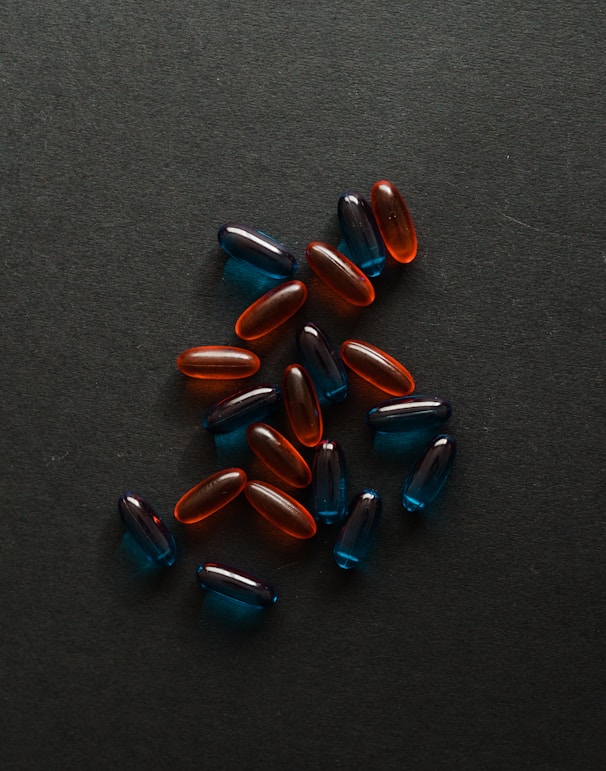Understanding Suboxone and Buprenorphine: Are They the Same?
Introduction
Opioid addiction is a major public health crisis that affects millions of individuals worldwide. Effective treatment is crucial for those struggling with opioid use disorder (OUD), and one of the most successful approaches involves the use of medication-assisted treatment (MAT). Among the medications used, Suboxone and Buprenorphine are prominent. This article explores whether Suboxone is the same as Buprenorphine, delving into their similarities, differences, and roles in opioid addiction treatment. Understanding these medications is vital for anyone considering or currently undergoing treatment for opioid addiction.
What is Buprenorphine?
Buprenorphine is a partial opioid agonist used in MAT to help individuals reduce or quit their use of heroin or other opiates, such as pain relievers like morphine. It works by binding to the same receptors in the brain that opioids target, but with less intensity, which helps to alleviate withdrawal symptoms and cravings without producing the same high.
Mechanism of Action
Buprenorphine's unique mechanism involves partial agonism at the mu-opioid receptor and antagonism at the kappa-opioid receptor. This dual action provides effective relief from cravings and withdrawal symptoms while reducing the risk of abuse and dependency compared to full opioid agonists like heroin and methadone. Additionally, its ceiling effect, where increasing doses do not produce increased euphoria beyond a certain point, adds a layer of safety by lowering the risk of overdose.
Forms of Buprenorphine
Buprenorphine is available in various forms, including:
Sublingual Tablets and Films: Placed under the tongue to dissolve.
Buccal Films: Placed between the gum and cheek.
Extended-Release Injections: Administered monthly for long-term maintenance.
Implants: Inserted under the skin and last for up to six months.
What is Suboxone?
Suboxone is a combination medication that contains both Buprenorphine and Naloxone. It is specifically designed to reduce the potential for abuse and misuse of Buprenorphine. Suboxone is commonly prescribed in the same forms as Buprenorphine—sublingual tablets and films.
Role of Naloxone
Naloxone is an opioid antagonist included in Suboxone to deter intravenous misuse. When taken as prescribed (sublingually), Naloxone has minimal effects due to poor absorption. However, if Suboxone is injected, Naloxone becomes active and can precipitate withdrawal symptoms, discouraging misuse.
Mechanism of Suboxone
The combination of Buprenorphine and Naloxone in Suboxone works synergistically. Buprenorphine manages cravings and withdrawal symptoms, while Naloxone serves as a safeguard against abuse. This dual approach helps maintain treatment integrity and promotes safer use.
Is Suboxone the Same as Buprenorphine?
While Suboxone and Buprenorphine are closely related, they are not identical. The primary difference lies in the presence of Naloxone in Suboxone. This inclusion has significant implications for the treatment process, especially concerning the potential for misuse and the method of administration.
Similarities Between Suboxone and Buprenorphine
Active Ingredient: Both medications contain Buprenorphine, which is the key component in managing opioid dependence.
Mechanism of Action: Both work by binding to opioid receptors, reducing cravings and withdrawal symptoms.
Administration: Both are commonly available in sublingual forms, though extended-release options exist for Buprenorphine alone.
Efficacy: Both are highly effective in reducing opioid use and improving patient outcomes when used as part of a comprehensive treatment plan.
Differences Between Suboxone and Buprenorphine
Naloxone Component: Suboxone includes Naloxone, while Buprenorphine can be prescribed without it. This addition in Suboxone aims to reduce misuse potential.
Abuse Deterrence: Suboxone's Naloxone component makes it less likely to be misused compared to Buprenorphine alone.
Prescription Preferences: Some healthcare providers prefer Suboxone due to its abuse-deterrent properties, especially for patients with a higher risk of misuse.
Cost and Accessibility: Depending on the region and insurance coverage, there can be cost differences between the two medications.
Clinical Considerations in Choosing Between Suboxone and Buprenorphine
When deciding between Suboxone and Buprenorphine, healthcare providers consider several factors, including:
Patient History: Individuals with a history of medication misuse may benefit more from Suboxone due to the Naloxone safeguard.
Risk of Diversion: In cases where diversion is a concern, Suboxone might be preferred.
Tolerance and Sensitivity: Some patients might have different responses to each medication, necessitating a tailored approach.
Compliance: The formulation that best supports patient adherence to the treatment plan is crucial for successful outcomes.
Benefits of Medication-Assisted Treatment (MAT)
MAT, incorporating medications like Suboxone and Buprenorphine, offers several benefits:
Reduced Cravings and Withdrawal Symptoms: Both medications effectively manage these issues, making recovery more attainable.
Improved Retention in Treatment: Patients on MAT are more likely to remain in treatment programs.
Decreased Risk of Relapse: Continuous use of these medications reduces the likelihood of returning to opioid use.
Enhanced Quality of Life: MAT helps individuals regain stability and functionality in their daily lives.
Side Effects and Considerations
Like all medications, Suboxone and Buprenorphine have potential side effects, including:
Common Side Effects: Headache, nausea, constipation, sweating, and sleep disturbances.
Serious Side Effects: Respiratory depression (particularly if misused), allergic reactions, and liver dysfunction.
Pregnancy and Breastfeeding: Buprenorphine alone is often preferred during pregnancy, but Suboxone may still be used if the benefits outweigh the risks.
Addressing Stigma and Misconceptions
Despite their proven efficacy, there is often stigma and misunderstanding surrounding MAT. Educating patients, families, and communities about the science behind these treatments can help combat negative perceptions and support individuals in recovery.
The Role of Counseling and Behavioral Therapies
While medications like Suboxone and Buprenorphine are critical, they are most effective when combined with counseling and behavioral therapies. Comprehensive treatment plans that address psychological and social aspects of addiction are essential for long-term recovery.
Advancements in Opioid Addiction Treatment
Ongoing research and advancements in the field of opioid addiction treatment continue to enhance the effectiveness of MAT. Innovations such as extended-release formulations and implants provide more options for personalized care.
Conclusion
In conclusion, while Suboxone and Buprenorphine are closely related and share many similarities, they are not identical. Suboxone's inclusion of Naloxone provides an added layer of safety against misuse, making it a preferred choice in many cases. Understanding the nuances between these medications is essential for healthcare providers and patients alike to make informed decisions about opioid addiction treatment. As the opioid crisis continues, effective treatments like Suboxone and Buprenorphine remain vital tools in the fight against addiction, offering hope and recovery to those in need.
FAQ Section
1. Is Suboxone the same as Buprenorphine? No, while both contain Buprenorphine, Suboxone also includes Naloxone to deter misuse.
2. How does Suboxone help in treating opioid addiction? Suboxone reduces cravings and withdrawal symptoms, helping individuals maintain sobriety.
3. Can Suboxone be misused? Suboxone is less likely to be misused due to the Naloxone component, which can precipitate withdrawal if injected.
4. What are the common side effects of Buprenorphine and Suboxone? Common side effects include headache, nausea, constipation, and sleep disturbances.
5. Are these medications safe during pregnancy? Buprenorphine alone is often preferred during pregnancy, but Suboxone may still be used if necessary.
6. How long does treatment with Suboxone or Buprenorphine last? The duration varies based on individual needs, ranging from several months to years.
7. Can these medications be used long-term? Yes, long-term use is common and can be beneficial for sustained recovery.
8. Do these medications cure opioid addiction? They are not cures but effective tools to manage addiction as part of a comprehensive treatment plan.
Further Reading and Resources
For those seeking more information about Suboxone, Buprenorphine, and opioid addiction treatment, the following resources can be invaluable:
Substance Abuse and Mental Health Services Administration (SAMHSA): A comprehensive source for information on MAT and opioid addiction treatment.
National Institute on Drug Abuse (NIDA): Provides detailed research and data on opioid use disorder and treatment options.
American Society of Addiction Medicine (ASAM): Offers guidelines and resources for addiction treatment professionals.
Final Thoughts
Opioid addiction is a complex and challenging condition, but with effective treatments like Suboxone and Buprenorphine, recovery is within reach. Understanding the differences and benefits of these medications empowers patients and healthcare providers to make the best choices for successful outcomes. With continued advancements and a comprehensive approach to treatment, we can make significant strides in combating the opioid crisis and supporting those on the path to recovery.


3750 N Henry Blvd Stockbridge GA 30281


